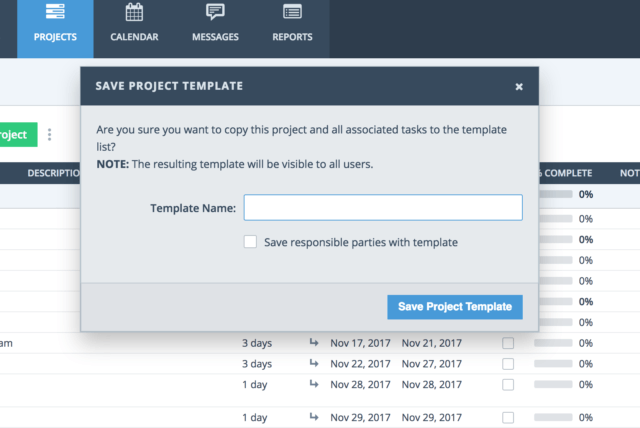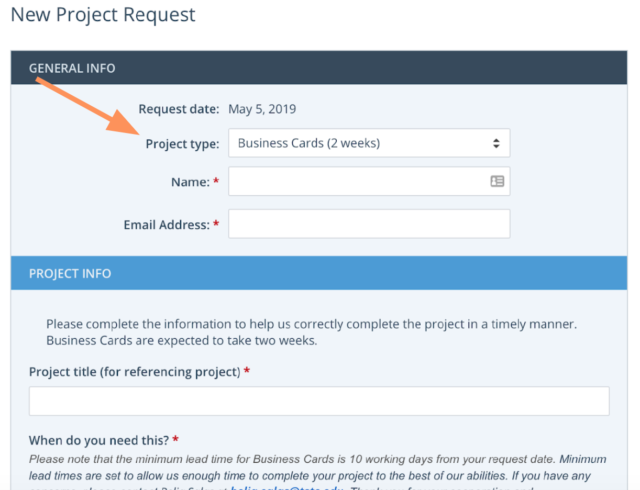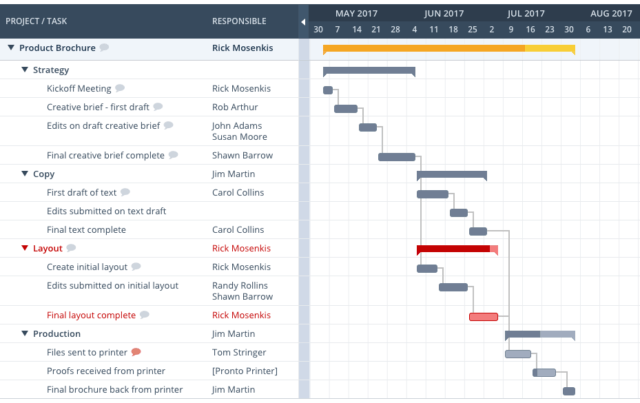Bringing order to the chaos of creativity in a typical marketer’s day requires a lot of attention. The last thing they need is project management features that do not work with them.
The creative project management process involves people (and their opinions!) and workflows subject to updates, iterations, and redesigns. All these changes contribute to a convoluted, complex flow of approvals and benchmarks, and deadlines.
Understandably, marketing managers and team members struggle to standardize those creative processes so every task and project is easily monitored and optimized to deliver the best results.
Beware of What You Don’t Know
For many marketing teams, their current reality is very far removed from their future potential.
Missed deadlines, miscommunication, and inefficient workflows all conspire to undermine the quality of work, productivity levels, and the satisfaction — and repeat business — of clients.
Marketing managers need the ability to “see” everything that is happening with their teams, from the small details of a complex design project to the high-level overview of projects and campaigns.
For most marketing managers, not knowing what they don’t know is where the trouble begins.
A Comprehensive Project Management Software Solution
Project management software allows marketing managers to take control of their teams, operations, and client relations. With the added control project management software gives them, managers can flush out the previously unknown details so that employees and coordinating departments are working towards the same defined and executable goals.
The following project management features empower every marketing manager and marketing team to achieve success through transparent oversight, accountability, and enhanced efficiencies.
7 Project Management Features Critical to Team Productivity
1. Projects Dashboard
What is a Projects Dashboard? An all projects dashboard gives a high-level view to all projects going on at one time. It will capture the most important information on the overall status of ongoing projects. This real-time insight on the progress of ongoing projects is critical to the effective management of teams and workflows.
Why is a Projects Dashboard important? An ideal Projects Dashboard layout presents key project metrics and information in easy-to-read, intuitive formats that allow managers to “see” every detail. For example, colors and/or symbols representing late or overdue projects lets a manager glance at a dashboard and take action.
2. Project Templates

What are Project Templates? Project Templates take repeatable processes and projects and save them for future use. Let’s say you have a project like providing business cards to new employees. Instead of copying and pasting the steps from last time you did the project, templates allow you to launch a fresh project from the saved steps in one click.
Why are Project Templates important? Templates do two main things – they save you time from seeking out the previous instance of a project, and give you more consistent projects as the steps are repeated from last time. A lack of consistent processes and procedures results in confusing work requests, misaligned resources, and misinformed employees. Project templates allow your teams to organize, monitor and iterate workflows, processes, and deliverables.
>>> Read more about project templates in Workzone here. <<<
3. Task Dependencies
What are Task Dependencies? Task Dependencies connect each specific task to an owner, deadline, and the next steps in the creative process; creating full transparency across projects and team collaborations. For example, when one task is finished, the next person responsible is alerted automatically so they can begin work right away.
Why are Task Dependencies important? Creative tasks require work and input from teams of multiple people. Managers love dependencies because they don’t need to be the middle man in assigning work. Letting the software handle the assignments frees up a ton of time!
Copywriters, for example, are dependent on designers for the final integration of creative visions, workflows, and assets. However, knowing who is responsible for what, and when, in the creative process can be daunting.
4. Project Request Forms

What are Project Request Forms? Project request forms intake requests from internal or external parties for work. Without software, requests are taken in the hallway, at your desk, by email, or chat. That can get confusing and disorganized quickly!
Why are Project Request Forms important? Project request forms control the flow of new work into an often already very busy workflow. Standardizing the approval of projects, resources, and deadlines are key to ensuring creative teams are not unfairly overwhelmed by project requests and ultimately set up for failure. Ensuring project requests are processed through a standardized form eliminates miscommunication of expected deadlines and reduces inefficiencies because the form is asking the right questions.
4b. (Bonus!) Project Request Dashboard
If we can call Project Request Forms “Feature 4a”, then a request dashboard with the ability to approve and deny projects is “4b”.
What is a Project Request Dashboard? The project requests from above have to go somewhere right? That’s where the Project Requests dashboard comes in. After submission, requests are routed to a central dashboard for approval (or denial!) by the team.
Why is a Project Request Dashboard important? By centralizing the form submissions into one area, managers can quickly assess the requests and determine whether or not they have the time or the resources to complete the projects int he desired timeframe. With this added control, a manager can distribute work as their resources allow it and not overwhelm the team.
5. Gantt Chart

What is a Gantt Chart? Gantt Charts allow your project managers and team members to visualize project progress using a bar chart that clearly illustrates everything from tasks lists and individually assigned responsibilities — all within the context of the overall project schedule.
Why is a Gantt Chart important? Gantt Charts portray the duration of each task and project so managers can align every detail and set actionable deadlines. A bonus feature to a Gantt Chart is the ability to dynamically change the bars to fit new deadlines.
6. Workload Reports
What is a Workload Report? Workload reports identify stressed and strained resources on your team. For example, if Chris has 60 hours allocated to his 40 hour work week, he probably has too much on his plate. A workload report will call that overage out.
Why are Workload Reports important? Just in the example above, workload reports have the ability to identify overworked (or underworked) employees. Overworked employees may be suffering in silence, getting burned out in their job. Perhaps managers could use this as an opportunity to get some of their overworked colleagues a vacation…in fact, 52% of American workers didn’t take vacations in 2017!
Over and under-allocated resources reveal opportunities to delegate responsibilities for a manager. Missed deadlines and poor quality work are often the results of employees who are overburdened or confused about their roles in projects. Keeping everyone balanced will keep clients and workers happy!
7. Time Tracking
What is Time Tracking? Timing is everything in managing projects and campaigns. From tracking time, you’ll ensure hours are properly billed and team workload is adequately balanced. Each project must be organized according to clearly defined deadlines and expectations, guided by a realistic assessment of the project demands and available resources.
Why is Time Tracking important? Time tracking features give project managers visibility into the time each project takes and each team member’s workload to identify which tasks monopolize the most time, resources, and budget — and to make changes accordingly.
How many of these project management features is your team using?
If you are struggling to answer, your team may not be fully equipped to reach its creative potential and productive capacity.
Workzone’s full suite of project management features is the result of decades of working closely with — and understanding the needs of — project managers. Workzone offers project managers the capabilities they need to streamline collaborative projects, meticulously monitor workflows and deadlines, and increase productivity while getting the most value from their budgets.
Give your team a competitive advantage by seeing Workzone in action.




